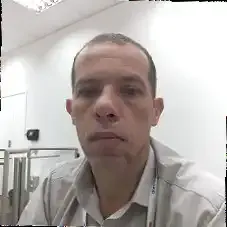USE OF TECHNOLOGY FOR CHILDREN WITH AUTISM
- #Inteligência Artificial (IA)
ABSTRACT
Communication can be a difficulty in many types of disorders of learning or intellectual disabilities. In this sense, nothing better than using visual and sound stimuli on tablets or cell phones to communicate some teaching. Technology, in this case, will work as a translator or even as a bridge for learning. Games or features that have voice commands can help autistic children initiate some kind of interaction. Even if, at first, this interaction is with a machine and not a human, it will take steps in its development and, in a way, existing, in some sphere that is not that of its own isolated world.
Key words: Autism, Technology, Learning, Communication.
- INTRODUCTION
Think about being in a foreign country and not understanding the people around you. Now imagine that you need help or you are feeling something, but you cannot communicate it to other people. Strangers start judging you because you are different from them and act "funny". This is similar to how an individual with autism feels in front of people. More and more children feel this way every day. Autism Spectrum Disorder (ASD) diagnoses are currently on the rise among hundreds of children in
all states of Brazil. Children who receive a diagnosis of
ASD face daily challenges due to this neurodevelopmental disorder. They have a hard time expressing their needs or wants with other people in an appropriate way. They are not able to understand the common social rules of conversation and building relationships with other people. An additional feature of autism is the difficulty of emotion regulation. They struggle to recognize their emotions and be able to control them, especially when their environment becomes overwhelming for them. With each of these challenges, it seems almost impossible for them to be able to learn alongside teaching peers in a school setting.
Berenice Piana Law (12.764/12) protects students with disabilities with regard to children's educational rights. As well as international standards signed by Brazil, such as the United Nations Convention on the Rights of Persons with Disabilities (6,949/2000), require that a child with a disability has the right to be educated among their non-disabled peers in the least restrictive environment. They should not be treated as outcasts and confined to isolated areas. They must have the same opportunities as other students to show their full potential. The teacher must be prepared to help these children learn and grow throughout the school year, just like any other student.
Think about being in a foreign country and not understanding the people around you. Now imagine that you need help or you are feeling something, but you cannot communicate it to other people. Strangers start judging you because you are different from them and act "funny". This is similar to how an individual with autism feels in front of people. More and more children feel this way every day. Autism Spectrum Disorder (ASD) diagnoses are currently on the rise among hundreds of children in all states of Brazil. Children who receive a diagnosis of ASD face daily challenges due to this neurodevelopmental disorder. They have a hard time expressing their needs or wants with other people in an appropriate way. They are not able to understand the common social rules of conversation and building relationships with other people. An additional feature of autism is the difficulty of emotion regulation. They struggle to recognize their emotions and be able to control them, especially when their environment becomes overwhelming for them. With each of these challenges, it seems almost impossible for them to be able to learn alongside teaching peers in a school setting.
Berenice Piana Law (12.764/12) protects students with disabilities with regard to children's educational rights. As well as international standards signed by Brazil, such as the United Nations Convention on the Rights of Persons with Disabilities (6,949/2000), require that a child with a disability has the right to be educated among their non-disabled peers in the least restrictive environment. They should not be treated as outcasts and confined to isolated areas. They must have the same opportunities as other students to show their full potential. The teacher must be prepared to help these children learn and grow throughout the school year, just like any other student.
2. THEORETICAL REFERENCE
Assisted technology (AT) includes a wide variety of tools that can be useful or even change the lives of people with autism. Defined in accordance with the Technological Assistance for Persons with Disabilities Act 1988 (Public Act 100-407), AT can be any item that is used to increase, maintain or improve the functional capabilities of persons with disabilities.
2.1 AUTISM SPECTRUM DISORDERS
Autism Spectrum Disorder (ASD) is registered by the American Psychiatric Association – APA (2013), as a disorder of neurodevelopment. About this, we articulate that the term autism was used for the first time in 1911, by Eugen Bleuler, a Swiss psychiatrist who aimed to describe characteristics of schizophrenia through studies.
However, the name of the Autism takes on a greater proportion in 1943, through the psychiatrist Leo Kanner, who in his first research already addressed characteristics of autism in a relevant way (CUNHA, 2015). It is valid to bring some particular characteristics of a child with ASD. “[...] ASD is called a neurological development disorder that should have signs since childhood, indicating a deficit in socio-communicative and behavioral proportions” (SCHMIDT, 2013, p. 13). Understanding that these proportions are inseparable. The definitions used by APA (2013) apud Zanon et al (2014) are in agreement with the principles already mentioned.
2.2 AUTISM AND LAWS SUPPORTING INCLUSION
Having knowledge about Autism Spectrum Disorder, it is necessary to know Laws that grant that these people can be welcomed by society. Certainly, there are no formulas for the integration of people in the professional, school and family scope, but it is extremely important to accept the heterogeneities of the subjects. Based on this, it is possible to highlight aspects that break barriers and end up leading to inclusion. Based on the Law of Guidelines and Bases for National Education, Law No. 9,394/96, within the National Policy on Special Education from the Perspective of Inclusive Education (2008), the National Guidelines for Special Education in Basic Education (RESOLUTION CNE/CEB No. 2, OF SEPTEMBER 11, 2001), Law No. important for Brazil in this approach to the inclusion of people with ASD.
2.3 INFORMATION TECHNOLOGIES IN INCLUSIVE EDUCATION
Most ICTs are directly linked to the current social context in which we live. This, in turn, consists of people with SEN of the most diverse types and levels, who may have ICT as their allies for inclusion, a fact that can present significant functions in their development, through assistive technology, which aims to include these individuals in the various existing social environments. We should not talk about inclusive education, without mentioning the ICTs developed in recent decades, which aim to boost and empower students, with the vision of assistive technology, making them socially included and breaking the limitations and obstacles that are for them. imposed. Cortelazzo (2012, p. 97) says that “assistive technology can support the action teacher both in processes of overcoming sensory limitations, motor, mental and social and in processes of increasing capacities”. Thus, it is understood that the processes of overcoming are broad, not just a benefit for those who have SEN, but encourages these subjects to improve in their entirety.
2.4 AUTISM AND DIGITAL TECHNOLOGIES
In the last decades, research has pointed out the benefits made possible by the use of technology in the learning of people with ASD; and, recently, the interest of this audience in mobile devices (CAMINHA et al., 2016). In this context, one can observe the increase in products, software technologies and educational applications designed for autistic people, thus contributing to the construction of a movement towards the inclusion and effective participation of this public within the educational scenario, covering the distance education modality.
According to Brito:
Nowadays, it is possible to find several applications that are for people with ASD [...] many of these apps focus on specific activities to work on a certain skill of the person with ASD, while there are applications and 67 Em Rede, v. 7, no. 2, p. 61-73, Jul./Dec. 2020. adapted devices looking for work multiple skills together and have the ability for use in different contexts – school, domestic or therapeutic (BRITO, 2016, p. 46).
Given the number of possibilities, applications that use assistive technology in the context of mobility are presented as an effective opportunity for the inclusion of people with autism in the teaching and learning processes, especially in Distance Education, a modality that has as a model the use of information and communication technologies.
3. METHODOLOGY
Through the use of adaptive technologies to educational support of autistic people, we try to carry out a case study, analyzing the importance of creating software aimed at these people. It is intended to find out if an environment developed and designed according to the specific needs of these students provides a better interaction and acquisition of knowledge through the use of new technologies. This article seeks to present a set of small applications that demonstrate possible advantages and possibilities of resources used in a specific learning process and taking into account the needs of this type of people. In this sense, one of the main objectives is the analysis of appropriate technologies in order to provide the development of the different capacities of an autistic person. The study was carried out at the Manoel Marçal De Araújo State School, located in Bairro da cachoeirinha, Av. Parintins, S/N, with authorization from its Director and faculty to present the data.
Some points in the study were considered as reality of the families of those people who have Autism Spectrum Disorder (ASD).
• Difficulties in accessing new technologies.
• Difficulties in using computers.
• Embarrassment with novelties and changes that may appear with the use of interactive materials.
4. RESULTS
Communication can be difficult in many types of situations learning disorders or intellectual disabilities. In this sense, nothing better than using visual and sound stimuli on tablets or cell phones to communicate some teaching. Technology, in this case, will work as a translator or even as a bridge for learning.
Some issues relevant to the use of software applications as a tool for the study of children and young people with autism were raised. This study was characterized by 4 questions that emphasize the use of technology as a tool to help academic life.
5. DISCUSSION OF RESULTS
With the great development of science, more directly with regard to technology these days, the use of mobile technology has become increasingly present in people's daily lives. We understand that technology has become an important tool for transforming society's customs, and the sooner it is presented to everyone, the greater the results obtained in favor of its development (SANTOS, 2016). It is important to highlight that mobile technologies have allowed the dissemination of information in different places and times.
The results referring to the graphs were very satisfactory regarding the software used in the research institution. However, the objective is not to emphasize the Alpha Autistic software, but to show how the software can significantly contribute to the evolution of children and adults who have this syndrome, and bring to a new educational sphere the methodology previously applied in some cases. educational institutions that insist on not evolving technologically with their students.
Apart from our study, another 03 studies contributed to the reflection on proposals for the implementation of digital technologies. We highlight the studies by Benedetti (2012), who researched the effects of the insertion of technologies in the pedagogical projects of a school for the care of people with Autism Spectrum Disorder - ASD. The study by Garcia (2015) proposed a model of educational assistance to people with ASD, using digital resources. The work developed by Brito (2016).
5.1 HOW TECHNOLOGY CAN HELP
Probably the most common use of technology to help children and adults with autism is to improve communication skills. There are hundreds of apps and many features built into these devices that can help support individuals with autism at all levels and abilities. One app, for example, might be aimed at a non-verbal child or adult, while another might help with social cues for an individual with strong.
5.2 MOTIVATION TOOL
Technological devices such as smartphones and tablets can also serve as motivation for autistic children or adults. Using an iPad or a favorite game app can serve as a reward for positive behavior, such as completing a task or homework.
6. FINAL CONSIDERATIONS
The article is based on the study of the impact of technology on people with autism spectrum disorder. By enabling autistic people to use these resources. The school manages to motivate them, while providing learning capable of expanding the students' cognitive and social-emotional development.
The use of software is one of the greatest resources for the learning of children and young people with autistic disorder using mobile devices such as smartphones and tablets. Finally, what is learned in the classroom through the use of technology can be transferred to the real environment and the daily life of children with autism, facilitating social coexistence and the quality of their lives. The purpose of this study is that a child.
REFERENCES
BENEDETTI, A.C. A inserção das tecnologias nos projetos pedagó- gicos das escolas e seus resultados quando aplicadas em pessoas com autismo. 2012. Monografia (Especialização em Mídias na Educação) – Universidade Federal do Rio Grande do Sul, Porto Alegre, 2012.
BRITTO, T. C. P. et al. GAIA: uma proposta de guia de sugestões de acessibilidade web com foco em questões do autismo. 2016. 257 f. Dissertação (Mestrado – Programa de Pós-graduação em Ciência da Computação) – Em Centro de Ciências Exatas e Tecnologia, Uni- versidade Federal de São Carlos, São Carlos, 2017. It is available at: https://repositorio.ufscar.br/handle/ufscar/8683. Accessed in: 07 fev. 2022.
BRITTO, T. C. P. GAIA: uma proposta de guia de recomendações de acessibilidade web com foco em aspectos do autismo. 2016. Disser- tação (Mestrado) - Universidade Federal de São Carlos, São Carlos, 2016.
CAMINHA, V. L.; ASSIS, J. H. L. M. de; ALVES, P. P. (Org.). Autismo: vivências e caminhos. São Paulo: Blucher, 2016.
CORTELAZZO, I. B. C. Formação de profissionais para uma edu- cação inclusiva mediada pelas tecnologias. In: OMOTE, S. (org.). As tecnologias nas práticas pedagógicas inclusivas. Marília: Oficina Universitária; São Paulo: Cultura. Acadêmica, 2012, p. 93-120.
CUNHA, Eugenio. Autismo e inclusão: psicopedagogia rotinas edu- cativas na escola e na família. 6 ed. Rio de Janeiro: Wak Ed. 2015. 140 p.
GARCIA, P. C. E. Uma proposta de atendimento educacional espe- cializado de um aluno com transtorno do espectro autista nos anos finais do ensino fundamental, utilizando mídias 11 [Digite uma ci- tação do documento ou o digitais e tecnologias da aprendizagem e do conhecimento. 2015. 75 f. Monografia (Especialização em Mídias na Educação) – Universidade Federal do Rio Grande do Sul, Porto Alegre, 2015.
SANTOS, V. D.; O desenvolvimento de aplicativos para dispositivos móveis para a educação. FATEC, SÃO PAULO. 2016.
SCHMIDT, Carlo. Autismo, educação e transdisciplinaridade. In: SCHMIDT, C (org) Autismo, educação e transdisciplinaridade. Campinas, SP: Papirus, 2013







